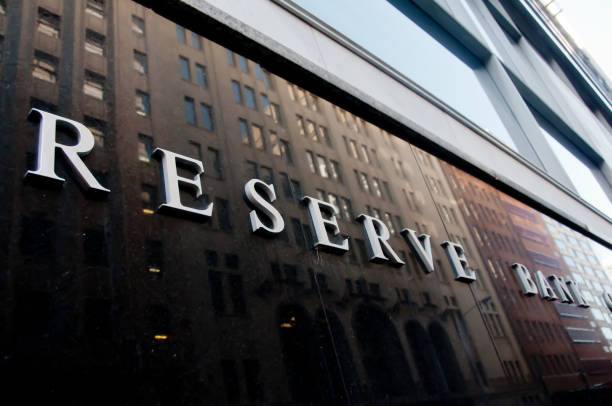
Westpac was surprised by the decision at the August Board meeting to maintain the policy to begin tapering bond purchases in early September. Since then near term growth prospects have deteriorated further. However that deterioration would need to trigger a rethink on the strength of the recovery to see a policy reversal.
Essentially the Board recognised that activity and employment were expected to decline in the September quarter due to the disruptions particularly in NSW but the economy was forecast to rebound later in the year as restrictions are eased consistent with the previously observed pattern in Australia and overseas.
Due to the strong momentum in the labour market prior to the NSW lock down and mindful of the expected bounce back the Board observed that the Bank’s forecasts for the unemployment rate by end 2022 had been lowered from 4.5% to 4.25% and wages growth had been lifted from 2.25% to 2.5%.
A note of caution around the wages and inflation forecast was raised. The Board pointed out that unemployment rates in the low 4’s had only been experienced during the pre GFC mining boom and in the early 1970’s implying that a degree of care around the inflation and wages forecasts would be appropriate.
The forecasts are based on the lock down in Sydney extending to the end of the September quarter.
Readers will be aware that Westpac expected that in response to the sharp deterioration in the near-term outlook the Board would decide to use its flexible bond buying policy to boost support for the economy. We expected that would entail an immediate increase in purchases from $5 billion per week to $6 billion to be reviewed at the November Board meeting.
Markets generally took a more conservative approach by expecting that the Board would defer its planned taper in purchase pace from $5 billion to $4 billion from early September.
As we know neither approach was taken and the Board decided to not respond at all to the sudden near term deterioration.
The Minutes note that “members therefore considered the case for delaying the taper of bond purchases …. but noted that the outlook for the economy is for a resumption of strong growth in 2022. Members judged that any additional bond purchases would have their maximum effect at that time, with only a marginal effect at present.”
The Board also recognised that “fiscal policy is a more appropriate instrument than monetary policy for providing support in response to a temporary localised reduction in incomes.”
However, the Board did note that “the bond purchase program would continue to be reviewed in light of economic conditions and the health situation.”
So, while recognising a sharp near-term deterioration in the outlook the policy response was to rely on forecasts rather than responding to the current developments. This approach is different to the avowed approach to the inflation target where policy would be targeted at actual developments rather than forecasts.
Westpac agrees that a strong rebound in activity is the central case for 2022 although there are undoubtedly risks around the delta variant; the possibility of other variants that are resistant to current vaccines; and a more cautious response from businesses and households than we saw in 2020 in light of the less generous packages for business and the unemployed.
The near-term outlook has also deteriorated significantly since the Board meeting.
The Board was advised that the economy could contract by at least 1 ppt in the September quarter. At that time Westpac’s estimate was for a contraction of 2.2% based on a Sydney reopening at end September.
We have recently revised down the growth outlook further to take into account a state-wide lock down in NSW which will extend until end October; and the extended lock down in Melbourne.
Westpac now expects a contraction of 2.6% in the September quarter and growth of 2.6% in the December quarter (down from 3.0%).
Consistent with the theme of a strong recovery we have lifted our 2022 growth forecast from 4.2% to 5.0%.
It is likely that the RBA staff will already be advising of a down grade from the forecasts that were discussed at the August Board meeting.
However, for the Board to change its policy stance adopted in the August meeting there would need to be some greater doubt cast on the strength of the recovery and Westpac’s forecasts are certainly not signalling that approach.
Conclusion
By characterising the sudden deterioration in the economy as a short-term development and maintaining prospects for a strong recovery the Board decided not to respond to the near-term threats.
An even deeper near term “hole”, which now seems certain, would only prompt a change in policy if doubt was cast on the pace of recovery.
Given that the Board did not respond to those risks in August it seems likely that it will take the same approach in September.
So, we are now likely to see the bizarre development where the health situation points to a sharp deterioration in the near term and the Board proceeds almost immediately after the September Board meeting with a tightening of its only active policy instrument.
I agree that will be a highly unusual situation but can only point to the decision, and reasoning set out in the Minutes, as the most likely outcome of the September Board meeting.
The September Board meeting is three weeks away on 7th September and much can change over that period.
Given how surprised I was with the August decision we cannot rule out a policy change in September especially if future developments raise some questions as to the vulnerability of the expected recovery.


 Signal2forex.com - Best Forex robots and signals
Signal2forex.com - Best Forex robots and signals




